
Deutsch-Chinesische Enzyklopädie, 德汉百科
 International cities
International cities


1565年的马耳他大围攻之中,统治马耳他的医院骑士团击退了奥斯曼帝国的侵袭。骑士团为防敌人再度来袭,决定兴建一个坚固的要塞都市。1566年3月28日,当时的骑士团总团长瓦莱特为瓦莱塔城奠基,并予以命名。瓦莱塔因而发展成为繁华的市区,当地大部分古色古香的建筑都源自骑士团统治时期。为了保卫瓦莱塔城,骑士团在城内建设了一座向海的碉堡,现列为联合国教科文组织世界遗产之一。
经过骑士团统治时期以及短暂的法国统治期间后,瓦莱塔的建筑在19世纪初受到了英国统治的影响。建筑闸门改得更为宽广,或被拆卸重建。第二次世界大战期间,瓦莱塔遭受德国及意大利军队空袭,多处受到严重损坏。最为知名的损坏是建于19世纪初、离瓦莱塔围城门不远的歌剧院。
Valletta (maltesisch auch il-Belt Valletta, il-Belt Valetta, Valetta oder il-Belt − italienisch auch La Valletta) ist die Hauptstadt der Republik Malta. Sie ist sowohl nach Fläche als auch nach Einwohnerzahl die kleinste Hauptstadt eines EU-Staates. Aufgrund ihres kulturellen Reichtums wurde Valletta 1980 als Gesamtmonument in die Liste des UNESCO-Welterbes eingetragen.[2] Im Jahr 2018 ist Valletta gemeinsam mit Leeuwarden (NL) Kulturhauptstadt Europas.[3]
Valletta gilt als eine der historisch am besten gesicherten Städte der Welt, denn sie wird von einem Ring aus Bastionen umgeben. Der südliche Eingang durch das einstige Stadttor wird vom St.-James- und St.-Johns-Kavalier gedeckt. Im Uhrzeigersinn folgen die nach Heiligen benannten, nur nach außen wirkenden Bastionen Michael, Andrew, Salvatore, Sebastion, Gregor, das Fort St. Elmo, Lazarus, Barbara, Anthony und James. Zur Zeit der Ritterherrschaft auf der Insel war jeweils eine der sogenannten Zungen des Malteserordens für deren Verteidigung zuständig. Die entsprechenden Mauerabschnitte sind daher auch nach den jeweiligen Zungen bezeichnet (z. B. Arragon-Curtain). Dass es auch einen Lazarus-Curtain gibt, lässt die Vermutung zu, dass hier der Lazarus-Orden, ein weiterer Ritterorden mit nahezu gleicher Geschichte wie der Malteserorden, zuständig war. Der offizielle Sitz des Ordens ist das Castello Lanzun in San Ġwann auf der Insel Malta.
バレッタ(Valletta)は、マルタ共和国の首都。ヴァレッタとも表記される。マルタ語ではイル・ベルト(Il-Belt 「都市」の意味)と呼ばれる。人口6,675人(2013年3月現在)[1]。マルタ島東部に位置し、港を見下ろすシベラスの丘の上にある。ホスピタル騎士団 (Knights Hospitaller) の時代以降の多くの建造物が残る。一部の地域では、バロック建築・マニエリスム建築・近代建築・新古典主義建築など多様な建築様式も見られる。第二次世界大戦では戦禍に巻き込まれ、多くの歴史的建造物が被害を受けた。1980年、ユネスコの世界遺産(文化遺産)に登録された。
Valletta (/vəˈlɛtə/, Maltese pronunciation: [ˈvɐlɛ.tɐ]) is the capital city of Malta. Located in the south east of the island, between Marsamxett Harbour to the west and the Grand Harbour to the east, its population in 2014 was 6,444,[4] while the metropolitan area around it has a population of 393,938.[2] Valletta is the southernmost capital of Europe.
Valletta's 16th century buildings were constructed by the Knights Hospitaller. The city is Baroque in character, with elements of Mannerist, Neo-Classical and Modern architecture, though the Second World War left major scars on the city, particularly the destruction of the Royal Opera House. The city was officially recognised as a World Heritage Site by UNESCO in 1980.[5]
The city's fortifications, consisting of bastions, curtains and cavaliers, along with the beauty of its Baroque palaces, gardens and churches, led the ruling houses of Europe to give the city its nickname Superbissima— Italian for Most Proud.
La Valette, (en maltais Il-Belt Valletta ou plus simplement Valletta, distinguée par le titre de Città Umilissima qui signifie "Ville Très Humble" en italien ; en anglais et en italien Valletta), est la capitale de la République de Malte.
Située sur la côte nord-est de l'île de Malte, peuplée d'environ 6 600 habitants, les Beltin (au singulier : masculin Belti, féminin Beltija), c'est le lieu d'un conseil municipal (Kunsill Lokali) compris dans la région (Reġjun) Nofsinhar.
La Valette est construite à partir de 1566 par la volonté des grands maîtres de l'ordre hospitalier de Saint-Jean de Jérusalem, maîtres de l'archipel de 1530 à 1798. La ville comporte de nombreux bâtiments de cette époque : on y recense 320 monuments sur une superficie de 55 hectares, concentration exceptionnelle dans le monde3. La ville est inscrite sur la liste du patrimoine mondial de l'humanité (liste de l'UNESCO) depuis 1980 et est la capitale européenne de la culture en 2018.
La Valletta (in maltese Il-Belt Valletta, in inglese Valletta) è una città di 6.444 abitanti dello stato insulare di Malta, nonché sua capitale[2].
Fu fondata nel 1566 dai Cavalieri Ospitalieri, che le diedero il nome del loro gran maestro Jean de la Valette[2]: precisamente essa venne chiamata, in latino, Humilissima Civitas Valettae ("L'umilissima città di Valletta") e si fregia tutt'oggi del titolo Città Umilissima. In maltese è colloquialmente detta Il-Belt e La città.
La Valletta è stata designata Capitale europea della cultura per il 2018 assieme a Leeuwarden.[3]
La Valeta1 (en maltés: Il-Belt Valletta; en inglés: Valletta) es la capital de Malta, situada sobre una península en la parte centro-oriental de la isla de Malta. La ciudad propiamente dicha cuenta con una población de 7650 habitantes (2011), excluyendo el área metropolitana adyacente. También es uno de los sesenta y ocho consejos locales que conforman el país desde 1993.
La Valeta tiene edificios que datan a partir del siglo XVI, construidos durante la época de los Caballeros Hospitalarios. La Valeta se caracteriza por tener construcciones barrocas, con elementos de la arquitectura del Renacimiento, la neoclásica y arquitectura moderna en zonas determinadas; ya que la Segunda Guerra Mundial ha dejado cicatrices en la ciudad. Fue oficialmente reconocida como un Patrimonio de la Humanidad por la Unesco en 1980.2
Валле́тта[3][4] (мальт. Belt Valletta, англ. Valletta) — столица республики Мальта, экономический и политический центр государства[5]. Названа в честь рыцаря, флотоводца, магистра ордена иоаннитов Жана Паризо де ла Валлетта, защитившего остров от турок в 1565 году и основавшего город, позднее названный в его честь. Собственно город Валлетта имеет население 6,444 (март 2014) человек (что составляет лишь 0,7 % от всего населения страны), в то время как в пригородах проживает почти 394 тысячи человек.
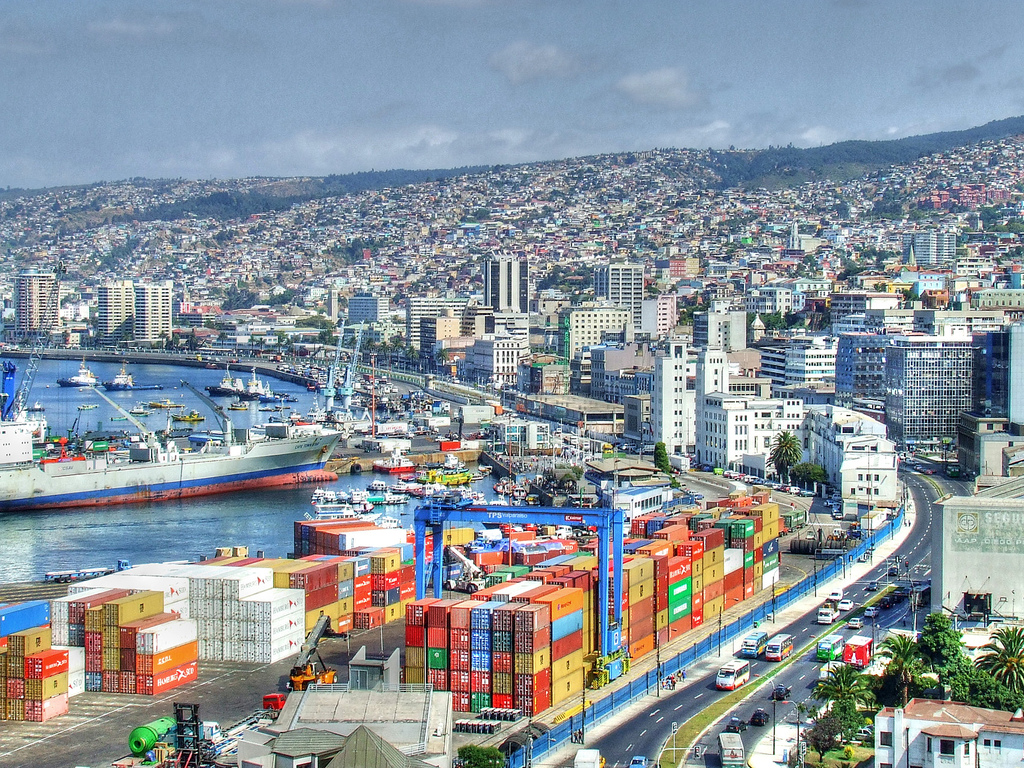

 British Columbia-BC
British Columbia-BC

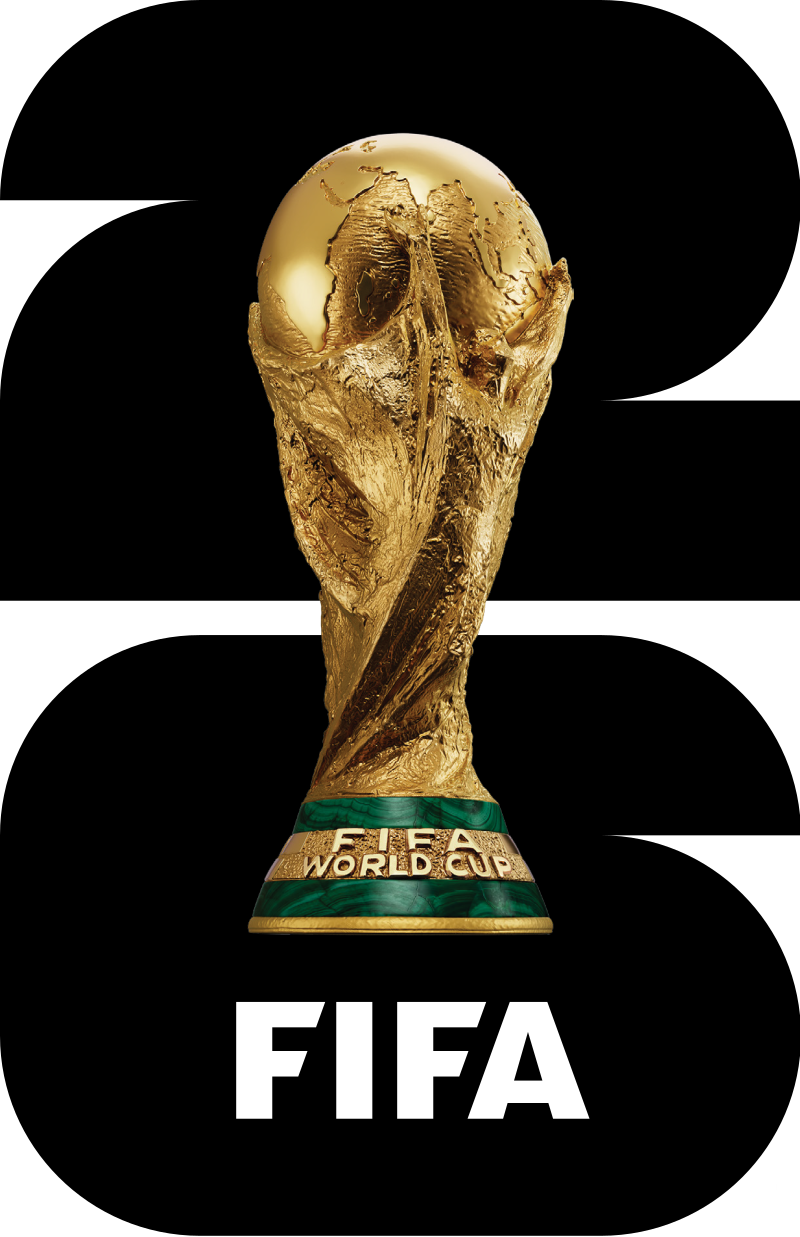 FIFA Fussball-Weltmeisterschaft 2026
FIFA Fussball-Weltmeisterschaft 2026
 Women's Soccer World Cup 2015
Women's Soccer World Cup 2015

 Geography
Geography

 Geography
Geography
 *World's Most Livable Cities
*World's Most Livable Cities
 ITU World Championship Series
ITU World Championship Series
 Canada
Canada
 Winter Olympics
Winter Olympics

 Ski vacation
Ski vacation

 Sport
Sport
 Triathlon
Triathlon

 Important port
Important port

一般所说的”温哥华”泛指”大温地区”(请参考温哥华概况介绍)。温哥华市中心位于一个半岛上,主要分成几块区域:西尾区与水滨(West End & Waterfront)、耶鲁镇(Yaletown)、盖士镇与华埠(Gastown & Chinatown)。市中心往南的温哥华市以Carrall街与Ontario街分成温西(West Side)与温东(East Side)。外地人常把温西与西温哥华(West Vancouver)搞混,后者是温哥华北岸的一个城市,从温哥华市中心向北跨越狮门大桥(Lions Gate Bridge)即可抵达。
西尾区(West End)在市中心西端,北与史丹利公园、南与市中心商业区紧邻,是由整片新兴的高级住宅大楼与罗布森街(Robson Street)购物区、各国风味餐厅、海滩、游艇码头等所组成的热闹区域。到温哥华旅游如果不自行开车,在西尾区住宿是明智选择。
耶鲁镇(Yaletown)是位于市中心东缘的新兴小区,这里有许多杂错的红砖仓库改建成精致典雅的新购物娱乐区与艺术家工作室。一栋栋平房红砖墙的建筑 及巷道上的石板路,将素有“Funky Town"之称的耶鲁镇特色表露无遗。耶鲁镇有电影制片公司、美发沙龙、室内设计工作室、小型设计师家具店、古董店、精品服饰店,加上各种特色美食与露天 咖啡座、小酒馆,让耶鲁镇的雅痞色彩十足,成为温哥华时尚一族抢着进驻的地区。
盖士镇(Gastown)是温哥华的发源地,是个以2条横街和3条直街组成的三角地带。卑诗省政府将盖士镇规划程成为独特的观光区与历史维护区。如今这里 保存完好的19世纪初维多利亚式建筑、铺满圆石的悠长街道、别致的露天咖啡屋,复古的路灯及一座座低矮的历史建筑,行走其间宛如时空错置。也是游客来温哥 华必至之处。(Quelle:http://www.usatrip.cn/jdjs/jdjs_Vancouver.asp)
温哥华市(City of Vancouver)是加拿大不列颠哥伦比亚省低陆平原地区一沿岸城市。根据2016年加拿大统计局人口普查,温哥华市人口有631,486人,而大温哥华地区的人口为246万,[1]是不列颠哥伦比亚省以至加拿大西部最大的都会区,以及全国第三大都会区;市内人口则在全国排行第八。[2][3]
温哥华以英国航海家乔治·温哥华命名,欧洲人抵达温哥华一带后,区内经济早期主要依赖于林木业。加拿大太平洋铁路于1887年延至温哥华后,温哥华成为北美西岸水陆路交通的主要枢纽之一,更构成远东地区、加拿大东部和英国之间贸易往来的重要一环。[4][5]温哥华港现时是加拿大最大和最繁忙的港口,以货物总吨数计也是北美第四大港口。[6]此外,温哥华的自然环境深受游客欢迎,令旅游业成为市内第二大经济支柱。[7]温哥华也是北美第三大制片中心,有“北方好莱坞”之称。[8][9]也是20世纪后,与美国旧金山同为华人在北美最集中的地区。
温哥华近年经常在各项世界最佳居住城市的调查中名列前茅。[10][11]温哥华亦曾于2010年与125公里以外的惠斯勒联手举办冬季奥运会和冬季残奥会。[12]此外温哥华还曾举办2015年女子世界杯足球赛,决赛场地即设在不列颠哥伦比亚体育馆。
Vancouver (englische Aussprache [væŋˈkuːvɚ] oder [vænˈkuːvɚ]) ist eine Stadt im Südwesten von British Columbia an der Westküste Kanadas. Sie liegt zwischen der Straße von Georgia und den Coast Mountains, rund 45 Kilometer nordwestlich der Grenze zu den USA. Die Stadt gehört zum Regionaldistrikt Metro Vancouver, der mit 2.463.431 Einwohnern[1] die größte Metropolregion Westkanadas und nach Toronto und Montreal die drittgrößte des Landes bildet. Die Bevölkerungszahl der eigentlichen Stadt Vancouver beträgt 631.486.[2] Benannt ist die Stadt nach dem britischen Kapitän George Vancouver, der die Region Ende des 18. Jahrhunderts erforschte und vermaß. Der Name Vancouver selbst stammt vom niederländischen „van Coevorden“, abgeleitet von der Stadt Coevorden.
Die Stadt entstand in den 1860er Jahren als Folge der Einwanderungswelle während des Fraser-Canyon-Goldrauschs und entwickelte sich nach der Eröffnung der transkontinentalen Eisenbahn im Jahr 1887 innerhalb weniger Jahrzehnte von einer kleinen Sägewerkssiedlung zu einer Metropole. Die Wirtschaft basierte zu Beginn auf der Ausbeutung der natürlichen Ressourcen von British Columbia: Forstwirtschaft, Bergbau, Fischerei und Landwirtschaft. Der Hafen Vancouver erlangte nach der Eröffnung des Panamakanals internationale Bedeutung. Er ist heute der größte in Kanada und exportiert mehr Güter als jeder andere Hafen in Nordamerika.
Vancouver wandelte sich mit der Zeit zu einem Dienstleistungszentrum und (insbesondere nach der Weltausstellung Expo 86) zu einem Reiseziel für Touristen. Die Stadt ist darüber hinaus hinter Los Angeles und New York der drittwichtigste Standort der nordamerikanischen Filmindustrie und wird daher auch als „Hollywood North“ bezeichnet. Die Finanzwirtschaft spielt ebenfalls eine bedeutende Rolle. In einer Rangliste der wichtigsten Finanzzentren weltweit belegt Vancouver den 15. Platz (Stand: 2018).[3]
Vancouver veranstaltete vom 12. bis 28. Februar 2010 die XXI. Olympischen Winterspiele. Einige Wettbewerbe der Spiele fanden im 125 Kilometer von Vancouver entfernten Whistler statt. Nach Montreal im Jahr 1976 und Calgary im Jahr 1988 war Vancouver die dritte kanadische Stadt, die Olympische Spiele veranstaltet hat.
バンクーバー(英語: Vancouver)は、カナダ連邦ブリティッシュコロンビア州南西部にある都市。同州最大の都市である。ヴァンクーヴァーと表記されることもある[3]。
バンクーバーを中心とする都市圏人口は210万人とカナダ国内第3位の都市圏を形成している[4]。バンクーバー市のみの人口では同国内で第8位の約64万人[5]である。民族や言語が多様で、人口のおよそ52%は第一言語が同州の公用語にあたる英語ではない[6]。北米有数の世界都市であり、2016年に発表された「世界の都市総合力ランキング」では、世界28位と評価された[7]。
1867年に製材所ができ、これらを中心とする入植地であったギャスタウンは発展を続け、グランビルとして町は拡大した。東カナダから続く鉄道の終着駅が町まで敷かれることになった1886年に町はバンクーバーとして改名され市政となる。
林業が同市最大の産業で、都市部ながら自然に囲まれた都市として知られていることから、観光業が発達しており、同市第2の産業となっている[8]。同市にあるメトロバンクーバー港は同国最大の港であり、北米においても積載量で第4位の規模を持つ[9]。同市および隣のバーナビー市には、主要な各映画製作会社が拠点を置いており、ロサンゼルス、ニューヨークに続く北米第3位の規模となる映画製作拠点となっている。このため、通称ハリウッドノースとも呼ばれる[10][11]。国際会議や国際競技が数多く開催されており、2010年には第21回冬季オリンピック(バンクーバーオリンピック)が開催された。
Vancouver (/vænˈkuːvər/ ( listen)) is a coastal seaport city in western Canada, located in the Lower Mainland region of British Columbia. As the most populous city in the province, the 2016 census recorded 631,486 people in the city, up from 603,502 in 2011. The Greater Vancouver area had a population of 2,463,431 in 2016, making it the third-largest metropolitan area in Canada. Vancouver has the highest population density in Canada with over 5,400 people per square kilometre,[5][6] which makes it the fifth-most densely populated city with over 250,000 residents in North America behind New York City, Guadalajara, San Francisco,[7] and Mexico City according to the 2011 census. Vancouver is one of the most ethnically and linguistically diverse cities in Canada according to that census; 52% of its residents have a first language other than English.[8][9] Roughly 30% of the city's inhabitants are of Chinese heritage.[10] Vancouver is classed as a Beta global city.
listen)) is a coastal seaport city in western Canada, located in the Lower Mainland region of British Columbia. As the most populous city in the province, the 2016 census recorded 631,486 people in the city, up from 603,502 in 2011. The Greater Vancouver area had a population of 2,463,431 in 2016, making it the third-largest metropolitan area in Canada. Vancouver has the highest population density in Canada with over 5,400 people per square kilometre,[5][6] which makes it the fifth-most densely populated city with over 250,000 residents in North America behind New York City, Guadalajara, San Francisco,[7] and Mexico City according to the 2011 census. Vancouver is one of the most ethnically and linguistically diverse cities in Canada according to that census; 52% of its residents have a first language other than English.[8][9] Roughly 30% of the city's inhabitants are of Chinese heritage.[10] Vancouver is classed as a Beta global city.
Vancouver is consistently named as one of the top five worldwide cities for livability and quality of life,[11][12] and the Economist Intelligence Unit acknowledged it as the first city ranked among the top-ten of the world's most well-living cities[13] for five consecutive years.[14] Vancouver has hosted many international conferences and events, including the 1954 British Empire and Commonwealth Games, UN Habitat I, Expo 86, the World Police and Fire Games in 1989 and 2009; and the 2010 Winter Olympics and Paralympics which were held in Vancouver and Whistler, a resort community 125 km (78 mi) north of the city.[15] In 2014, following thirty years in California, the TED conference made Vancouver its indefinite home. Several matches of the 2015 FIFA Women's World Cup were played in Vancouver, including the final at BC Place.[16]
The original settlement, named Gastown, grew up on clearcuts on the west edge of the Hastings Mill logging sawmill's property, where a makeshift tavern had been set up on a plank between two stumps and the proprietor, Gassy Jack, persuaded the curious millworkers to build him a tavern, on July 1, 1867. From that first enterprise, other stores and some hotels quickly appeared along the waterfront to the west. Gastown became formally laid out as a registered townsite dubbed Granville, B.I. ("B.I" standing for "Burrard Inlet"). As part of the land and political deal whereby the area of the townsite was made the railhead of the Canadian Pacific Railway (CPR), it was renamed "Vancouver" and incorporated shortly thereafter as a city, in 1886. By 1887, the Canadian Pacific transcontinental railway was extended westward to the city to take advantage of its large natural seaport to the Pacific Ocean, which soon became a vital link in a trade route between the Orient / East Asia, Eastern Canada, and Europe.[17][18] As of 2014, Port Metro Vancouver is the third-largest port by tonnage in the Americas (recently displacing New York City), 27th in the world,[19] the busiest and largest in Canada, and the most diversified port in North America.[20] While forestry remains its largest industry, Vancouver is well known as an urban centre surrounded by nature, making tourism its second-largest industry.[21]
Major film production studios in Vancouver and nearby Burnaby have turned Greater Vancouver and nearby areas into one of the largest film production centres in North America,[22][23] earning it the nickname "Hollywood North".[24][25][26]
Vancouver /vãkuvaɛ̯ʁ/a Écouter ou /vɑ̃kuvɛʁ/b (en anglais : /væŋˈkuvɚ/c Écouter) est une cité1 portuaire du pourtour du Pacifique située dans les basses-terres continentales de la province de Colombie-Britannique, au Canada. Avec 631 486 habitants selon le recensement du Canada de 2016, elle est la huitième plus grande municipalité canadienne3. Son agglomération de 2 463 431 est la troisième aire urbaine du pays, et la plus peuplée de l'Ouest canadien. Vancouver est une des villes les plus cosmopolites du Canada, 52 % des résidents ont une autre langue maternelle que l'anglais4. Vancouver est considérée comme une ville mondiale de classe beta. La superficie de Vancouver est de 114,97 km2, donnant une densité de population de 5 493 au kilomètre carré, faisant d'elle la municipalité canadienne la plus densément peuplée et la quatrième en Amérique du Nord, après New York, San Francisco et Mexico5. Elle est la vingt-troisième ville la plus peuplée d'Amérique du Nord6.
Le premier établissement, nommé Gastown, s'est développé autour d'une scierie appelé Hastings Mills, en 1867. Le site fut renommé Vancouver et incorporé comme cité en 1886. En 1887, le chemin de fer transcontinental a été étendu jusqu'à elle pour profiter de son grand port naturel, qui est rapidement devenu un maillon essentiel d'une route commerciale entre la côte est du Canada, l'Orient et l'Europe7,8. En 2009, Port Metro Vancouver est le port le plus grand et le plus achalandé du Canada, et le plus diversifié d'Amérique du Nord9. Même si l'exploitation forestière demeure sa plus grande industrie, Vancouver est réputée pour être un centre urbain entouré par la nature, faisant du tourisme sa deuxième industrie10. Les studios de production cinématographique de Vancouver et de Burnaby ont fait de la métropole l'un des plus grands centres cinématographiques en Amérique du Nord11,12, ce qui lui a valu le surnom de Hollywood North13,14,15.
Vancouver est régulièrement citée comme l'une des cinq meilleures villes au monde pour sa qualité de vie16,17, et l'Economist Intelligence Unit l'a classée parmi les dix villes les plus agréables durant cinq années consécutives18,19. Vancouver fut l'hôte de nombreux évènements internationaux, comme les Jeux de l'Empire britannique et du Commonwealth de 1954, la conférence Habitat I par l'Organisation des Nations unies en 1976, l'Exposition internationale de 1986 et les Jeux olympiques d'hiver de 201020. En 2015, elle a accueilli la finale de la Coupe du monde féminine de football21. La ville accueillera en 2018 le Congrès ornithologique international.
Vancouver (AFI: [vanˈkuver][1]) è una città canadese, sulla costa Pacifica della provincia canadese della Columbia Britannica (British Columbia). È situata nella parte meridionale della provincia e rappresenta uno dei maggiori porti dell'Oceano Pacifico. È delimitata dallo Stretto di Georgia (Georgia Strait), dal fiume Fraser, e dalla catena montuosa delle Montagne Costiere. Il nome è in onore del capitano George Vancouver, esploratore britannico.
La popolazione della città è di 603 502 abitanti, mentre l'area urbana ne conta 2 135 201. Vancouver fa parte della regione metropolitana, conosciuta come la "Greater Vancouver Regional District" (GVRD) o Metro Vancouver, nella quale vivono 2 463 700 (stima del 2012)[2]. Questo la rende la più grande area metropolitana nel Canada occidentale, e la terza più grande nel paese. Come in buona parte del Canada, anche Vancouver etnicamente è molto diversificata, basti pensare che il 52% dei residenti[3][4] della città e il 43% dell'area metropolitana hanno come prima lingua un idioma diverso dall'inglese[5].
La popolazione metropolitana è proiettata a raggiungere i 3 milioni di abitanti entro il 2021[6]. La densità di popolazione è tra le più alte del Nord America, e la pone al quarto posto dopo New York, San Francisco e Città del Messico. Il trend porta a stimare che possa raggiungere il secondo posto entro il 2021[7].
L'economia di Vancouver ha tradizionalmente fatto leva sulle risorse della Columbia Britannica: forestali, minerarie, pesca e agricoltura. Ma tuttavia è andata diversificandosi nel tempo, ed oggi Vancouver ha un'importante e vitale industria nel settore dei servizi e del turismo. La città è diventata il terzo più grande polo di produzione cinematografico del Nord America dopo Los Angeles e New York, tanto da guadagnarsi il soprannome di Hollywood del Nord[8][9][10]. Vancouver ha avuto un'espansione nell'industria dell'high-tech, in particolare nello sviluppo dei videogiochi.
Vancouver è costantemente classificata fra le prime tre città più vivibili del mondo[11][12][13]. Secondo il rapporto 2010 della Mercer Human Resource Consulting, ad esempio, Vancouver è considerata la prima città al mondo per qualità della vita. Nel 2007 Vancouver era la seconda città più cara del Canada dopo Toronto e la 89ª a livello globale.
Nel 2010 Vancouver, insieme a Whistler, situata 125 km a nord della città, ha ospitato i Giochi olimpici invernali e i Giochi Paralimpici invernali.
Vancouver (en inglés:  /væŋ'ku:vɚ/ (?·i), en español /baŋ'kuβ̞eɾ/) es una ciudad de la costa pacífica de Canadá, ubicada en el suroeste de la provincia de Columbia Británica, entre el estrecho de Georgia y las Montañas Costeras. La ciudad fue llamada así en honor del capitán George Vancouver, un explorador inglés.
/væŋ'ku:vɚ/ (?·i), en español /baŋ'kuβ̞eɾ/) es una ciudad de la costa pacífica de Canadá, ubicada en el suroeste de la provincia de Columbia Británica, entre el estrecho de Georgia y las Montañas Costeras. La ciudad fue llamada así en honor del capitán George Vancouver, un explorador inglés.
Es parte del área metropolitana del Distrito Regional del Gran Vancouver, el cual, con una población de 2 313 328 habitantes (2011),1 constituye el área metropolitana más grande del oeste canadiense y la tercera en el país después de Toronto y Montreal.2 Vancouver en sí mismo cuenta con 603 502 habitantes.1 El gentilicio utilizado para referirse a los residentes de Vancouver es vancuverita o vancouverense,3 (en inglés Vancouverite).
Vancouver, en los últimos años, siempre ha sido considerada como una de las cinco ciudades con mejor calidad de vida en el mundo.4567 En 2013, obtuvo el puesto 21º entre las ciudades en que es más caro vivir y resultó ser la más cara de Norteamérica. 8 También es una de las ciudades más seguras del mundo, debido a sus bajísimas tasas de criminalidad.
Los Juegos Olímpicos y Paralímpicos de invierno de 2010 se llevaron a cabo en Vancouver y en la cercana localidad de Whistler.91011
Ванку́вер (англ. Vancouver) — город на западе Канады, крупнейший населённый пункт провинции Британская Колумбия и третий по величине в Канаде. В 2010 году в Ванкувере проводились XXI зимние Олимпийские игры. Исследовательская группа Economist Intelligence Unit (EIU) британского издания The Economist трижды — в 2005, 2007, 2009 годах — присваивала Ванкуверу звание «лучшего города Земли»[2][3][4].
Население самого города — 631 486 чел. (на 2016 год). В агломерации Большой Ванкувер (англ.)русск. проживает свыше 2 463 431 чел. (на 2016 год) — это третья по величине агломерация в Канаде. Ванкувер является наиболее этнически и лингвистически разнообразным городом страны — 52 % его жителей считают своим родным языком не английский[5].


Varanasi (Hindi: वाराणसी, Urdu: وارانسى, Vārāṇasī ![]() [ʋɑːˈrɑːɳəsiː]), auch Benares (बनारस, بنارس, Banāras [bəˈnɑːrəs]) oder Kashi (काशी, کاشی, Kāśī [ˈkɑːʃiː]) genannt, ist eine Stadt im indischen Bundesstaat Uttar Pradesh. Sie liegt am Ganges und hat rund 1,2 Millionen Einwohner (Volkszählung 2011). Varanasi ist eine der ältesten Städte Indiens und gilt als heiligste Stadt des Hinduismus.
[ʋɑːˈrɑːɳəsiː]), auch Benares (बनारस, بنارس, Banāras [bəˈnɑːrəs]) oder Kashi (काशी, کاشی, Kāśī [ˈkɑːʃiː]) genannt, ist eine Stadt im indischen Bundesstaat Uttar Pradesh. Sie liegt am Ganges und hat rund 1,2 Millionen Einwohner (Volkszählung 2011). Varanasi ist eine der ältesten Städte Indiens und gilt als heiligste Stadt des Hinduismus.
Varanasi ist seit 1994 eine Municipal Corporation (Nagar Nigam), eine selbstverwaltete Kommune der höchsten Kategorie.[3] Das Stadtgebiet erstreckt sich über eine Fläche von 79,79 km².[3] Varanasi ist Sitz des gleichnamigen Distrikts.



威尼斯(威尼斯语︰Venezsia;意大利语︰Venezia;弗留利语︰Vignesie;拉丁语︰Venetia;英文:Venice)是意大利东北部著名的旅游与工业城市,也是威尼托地区的首府。威尼斯城由被运河分隔并由桥梁相连[1]的118座小岛组成。[2]威尼斯潟湖是位于波河与皮亚韦河河口之间的一个封闭的海湾,威尼斯城就坐落在威尼斯潟湖的浅滩上。威尼斯以其优美的环境、建筑和艺术品珍藏而闻名。[1]潟湖和城市的一部分被列为世界遗产。[1]Luigi Barzini曾在纽约时报形容它“无疑是最美丽的人造都市”[3],时代线上也称赞威尼斯是欧洲最浪漫的城市之一。
2014年,共有264,579人居住在威尼斯市镇,其中约55,000人居住在老城区。威尼斯与帕多瓦和特雷维索一起,组成了帕多瓦-特雷维索-威尼斯大都市区(PATREVE),总人口260万。PATREVE只是一个统计学意义上的大都市区,不是行政区划的等级。[4]
威尼斯这个名字源于公元前十世纪居住在该地区的古威尼蒂人。[5][6]这个城市历史上曾经是威尼斯共和国的首府。威尼斯同时被誉为“主之城”、“尊贵之城”、“亚得里亚王后”、“水之都”、“面具之城”、“桥梁之城”、“漂浮之都”、“运河之城”。
威尼斯共和国是中世纪和文艺复兴时期的主要金融和海运力量,是十字军东征和勒班陀战役的集结地,也是从13世纪直到17世纪末的一个非常重要的商业(特别是丝绸,粮食和香料)和艺术中心。[7] 威尼斯市被认为是第一个真正的国际金融中心,9世纪逐渐形成,14世纪达到了顶峰。这使威尼斯在其大部分历史中成为一座极为富裕的城市。[8]后来因为土耳其人对地中海东边的控制促使欧洲国家寻找其他航线的欲望,威尼斯因此失去了大部分的重要性与影响力。
它同样因为几次特别是文艺复兴时期的重要的艺术运动而众所周知的。在拿破仑战争和维也纳会议之后,共和国被奥地利帝国所吞并,直到1866年,由于第三次意大利独立战争而举行的全民公投,威尼斯成为意大利王国的一部分。威尼斯在交响乐和歌剧音乐史上也起着重要的作用,它是安东尼奥·维瓦尔第的诞生地。[9]2016年,威尼斯被评为世界上最美丽的城市。[10]
Venedig (italienisch Venezia [veˈnɛʦːi̯a], venezianisch Venesia[2] [veˈnɛzi̯a] oder [veˈnɛzja]) ist eine Stadt im Nordosten Italiens. Sie ist die Hauptstadt der Region Venetien, Metropolitanstadt Venedig und trägt den Beinamen La Serenissima („Die Durchlauchtigste“).[3] Ihr historisches Zentrum (centro storico) liegt auf einigen größeren Inseln in der Lagune von Venedig.
Die Gesamtfläche Venedigs beträgt 414,6 km², davon entfallen 257,7 km² auf Wasserflächen.[4] Am 31. Dezember 2016 zählte die Stadt 261.905 Einwohner, davon 181.883 in den Stadtteilen auf dem Festland, 58.901 im historischen Zentrum und 29.674 innerhalb der Lagune.[5] In der Lagune befinden sich 118 Inseln.[6] Sie erstreckt sich über etwa 50 km zwischen den Mündungen der Flüsse Adige (Etsch) im Süden und Piave im Norden in die Adria.
Venedig war bis 1797 Hauptstadt der Republik Venedig und mit über 180.000 Einwohnern eine der größten europäischen Städte. Bis ins 16. Jahrhundert war sie eine der größten Handelsstädte, über die der Handel zwischen Westeuropa und dem östlichen Mittelmeer abgewickelt wurde. Venedig unterhielt die meisten Handels- und Kriegsschiffe. Ihr Adel profitierte vom Handel mit Luxuswaren, Gewürzen, Salz und Weizen. Venedig entwickelte sich zum größten Finanzzentrum und dominierte ein Kolonialreich, das von Oberitalien bis Kreta und zeitweise bis nach Zypern reichte.[7] Nach französischer und österreichischer Herrschaft zwischen 1798 und 1866 wurde Venedig ein Teil Italiens. 1929 wurde der Industriekomplex Mestre-Marghera in die Comune di Venezia eingemeindet. Der jüdische Anteil der Bevölkerung wurde während des Zweiten Weltkriegs vernichtet. In den Jahren 1965 bis 1970 erreichte die Stadt mit knapp 370.000 Einwohnern die höchste Bevölkerungszahl, die seitdem wieder um etwa 100.000 Einwohner zurückgegangen ist.
Venedig und seine Lagune stehen seit 1987 auf der UNESCO-Liste des Weltkulturerbes.[8] Sie inspirierten besonders die Künstler und Venedig wurde zu einer der von Touristen meistbesuchten Städte. Seit einem Jahrhundert ist die wirtschaftliche Struktur der Altstadt einseitig auf den Tourismus ausgerichtet, während sich die industrielle Tätigkeit vor allem um Mestre und Marghera auf dem westlichen Festland konzentriert.
ヴェネツィア(イタリア語: Venezia (![]() 音声ファイル)[5])は、イタリア共和国北東部に位置する都市で、その周辺地域を含む人口約26万人の基礎自治体(コムーネ)。ヴェネト州の州都、ヴェネツィア県の県都である。ヴの表記によりベネチアと表記されることもある。
音声ファイル)[5])は、イタリア共和国北東部に位置する都市で、その周辺地域を含む人口約26万人の基礎自治体(コムーネ)。ヴェネト州の州都、ヴェネツィア県の県都である。ヴの表記によりベネチアと表記されることもある。
中世にはヴェネツィア共和国の首都として栄えた都市で、「アドリア海の女王」・「水の都」・「アドリア海の真珠」[要出典]などの別名をもつ。英語では「Venice」と呼ばれ、これに由来して日本語でもヴェニス、ベニスと呼ばれることもある。
古来はラテン語でウェネティ人の土地を意味し、ウェネティ人が住んでいたアドリア海の奥に拡がる土地をウェネティア (Venetia) と呼んだことから来ている。この綴りをそのままイタリアでのラテン語の読み方に従うと、ヴェネツィア(ヴェネツャ)となる。英語でヴェニス (Venice)、フランス語でヴニーズ (Venise)、ドイツ語でヴェネーディヒ (Venedig) と呼ばれる。ヴェネツィア方言では、古語は Venexia、現代語では Venessia(まれに Venezsia)と表記され、ヴェネーシアとヴェネースィアの中間に近い音で発音される。
日本語の表記では、イタリア語から来たものでもヴェネーツィアを始めとして、ヴェネチア、ベネチア、ベネツィアなどもある。英語由来の日本語表記では、ヴェニス、ベニスなどと書かれることもある。
英語での形容詞形"Venetian"はヴィニーシャンとヴェニーシャンの中間に近い発音だが、これの日本語表記は「ヴェネチアン」または「ベネチアン」となることが多く、また、綴りは異なるがイタリア語の影響から「ヴェネツィアン」と表記されることもしばしば。
Venice (/ˈvɛnɪs/, VEN-iss; Italian: Venezia [veˈnɛttsja] (![]() listen); Venetian: Venesia, Venexia [veˈnɛsja]) is a city in northeastern Italy and the capital of the Veneto region. It is situated across a group of 118 small islands[1] that are separated by canals and linked by 400 bridges.[2][3] The islands are located in the shallow Venetian Lagoon, an enclosed bay that lies between the mouths of the Po and the Piave rivers (more exactly between the Brenta and the Sile). Parts of Venice are renowned for the beauty of their settings, their architecture, and artwork.[2] The lagoon and a part of the city are listed as a UNESCO World Heritage Site.[2]
listen); Venetian: Venesia, Venexia [veˈnɛsja]) is a city in northeastern Italy and the capital of the Veneto region. It is situated across a group of 118 small islands[1] that are separated by canals and linked by 400 bridges.[2][3] The islands are located in the shallow Venetian Lagoon, an enclosed bay that lies between the mouths of the Po and the Piave rivers (more exactly between the Brenta and the Sile). Parts of Venice are renowned for the beauty of their settings, their architecture, and artwork.[2] The lagoon and a part of the city are listed as a UNESCO World Heritage Site.[2]
In 2014, 264,579 people resided in Comune di Venezia, of whom around 55,000 live in the historic city of Venice (Centro storico). Together with Padua and Treviso, the city is included in the Padua-Treviso-Venice Metropolitan Area (PATREVE), with a total population of 2.6 million. PATREVE is only a statistical metropolitan area.[4]
The name is derived from the ancient Veneti people who inhabited the region by the 10th century BCE.[5][6] The city was historically the capital of the Republic of Venice. Venice has been known as the "La Dominante", "Serenissima", "Queen of the Adriatic", "City of Water", "City of Masks", "City of Bridges", "The Floating City", and "City of Canals."
The Republic of Venice was a major financial and maritime power during the Middle Ages and Renaissance, and a staging area for the Crusades and the Battle of Lepanto, as well as a very important center of commerce (especially silk, grain, and spice) and art in the 13th century up to the end of the 17th century. The city-state of Venice is considered to have been the first real international financial center which gradually emerged from the 9th century to its peak in the 14th century.[7] This made Venice a wealthy city throughout most of its history.[8]
It is also known for its several important artistic movements, especially the Renaissance period. After the Napoleonic Wars and the Congress of Vienna, the Republic was annexed by the Austrian Empire, until it became part of the Kingdom of Italy in 1866, following a referendum held as a result of the Third Italian War of Independence. Venice has played an important role in the history of symphonic and operatic music, and it is the birthplace of Antonio Vivaldi.[9] Venice has been ranked the most beautiful city in the world as of 2016.[10] The city is facing some major challenges, however, including financial difficulties, erosion, pollution, subsidence, an excessive number of tourists in peak periods and problems caused by oversized cruise ships sailing close to the banks of the historical city.[11][12][13]
Venise (italien : Venezia /veˈnɛtʦja/, vénitien : Venexia /veˈnɛˑsja/) est une ville portuaire du nord-est de l'Italie, sur les rives de la mer Adriatique. Elle s'étend sur un ensemble de 118 petites îles séparées par un réseau de canaux et reliées par des ponts. Située au large de la lagune vénète, entre les estuaires du Pô et du Piave, Venise est renommée pour cette particularité, ainsi que pour son architecture et son patrimoine culturel — elle et sa lagune sont inscrites au patrimoine mondial de l'UNESCO.
Venise est la capitale de la région de la Vénétie. En 2012, la commune compte 269 810 habitants, dont 58 666 intra-muros (Centro storico)1. 176 000 résident sur les rives (Terraferma), pour la plupart dans les frazioni de Mestre et Marghera, et les 31 000 habitants restants résident dans d'autres îles de la lagune. Avec Padoue et Trévise, Venise constitue l'aire métropolitaine Padoue-Trévise-Venise (PATREVE), une entité statistique de 1 600 000 habitants.
Fondée peu après 528, elle fut la capitale pendant onze siècles (697-1797) de la République de Venise. Durant le Moyen Âge et la Renaissance, la ville fut une grande puissance maritime, à l'origine de la Quatrième croisade et victorieuse lors de la bataille de Lépante en 1571 contre l'Empire ottoman. Grâce à ses liens avec l'Asie et le Proche-Orient, dont le marchand et explorateur Marco Polo fut l'initiateur, elle devint également l'une des principales places commerciales d'Europe, notamment de la soie, des céréales et des épices. Enfin, elle est un centre culturel majeur, du XIIIe à la fin du XVIIe siècle, dont les peintres de l’École vénitienne (dont Titien, Véronèse et Le Tintoret), Carlo Goldoni et Antonio Vivaldi sont les principaux représentants.
Son nom provient du peuple qui habitait la région avant le Xe siècle, les Veneti. Dénommée Venetiae en latin, elle est parfois surnommée la « Cité des Doges », la « Sérénissime », la « Reine de l'Adriatique », la « Cité des Eaux », la « Cité des Masques », la « Cité des Ponts » ou encore la « Cité flottante ». La ville est aujourd'hui célèbre pour ses canaux — notamment le Grand Canal — et ses gondoles, ses nombreuses églises, la place Saint-Marc, le palais des Doges, le Pont des Soupirs, sa Biennale ainsi que son carnaval.
Venezia (AFI: /veˈnɛʦja/[5], ; [veˈnɛːsja][Nota 3]) è un comune italiano di 260 923 abitanti, il cui centro storico (limitato ai sestieri della città lagunare) ne conta invece 53 976[6] [7], capoluogo dell'omonima città metropolitana e della regione Veneto. È il primo comune della regione per popolazione, undicesimo in Italia[8] e primo in Veneto per superficie[9]. Il comune di Venezia comprende sia territori insulari sia di terraferma ed è articolato attorno ai due principali centri di Venezia (al centro dell'omonima laguna) e di Mestre (nella terraferma).
La città di Venezia è stata per più di un millennio capitale della repubblica di Venezia ed è conosciuta a questo riguardo come la Serenissima, la Dominante e la Regina dell'Adriatico. Per le peculiarità urbanistiche e per il suo patrimonio artistico, Venezia è universalmente considerata una tra le più belle città del mondo ed è annoverata, assieme alla sua laguna, tra i siti italiani patrimonio dell'umanità dall'UNESCO[10]: questo fattore ha contribuito a farne la terza città italiana (dopo Roma e Milano) con il più alto flusso turistico[11], in gran parte proveniente da fuori Italia.
Venecia (en italiano: Venezia [veˈnɛʦːi̯a] y en véneto: Venessia o Venesia [veˈnɛsi̯a]) es una ciudad ubicada en el noreste de Italia. Es también la capital de la región véneta y de la provincia de Venecia. Su centro histórico, declarado Patrimonio de la Humanidad por la Unesco,2 está situado en un conjunto de islas en la laguna de Venecia, en el norte del mar Adriático.
La ciudad está construida sobre un archipiélago de 118 pequeñas islas unidas entre sí por 455 puentes, si incluimos las islas de Murano y Burano. Se llega a Venecia desde tierra firme por el Puente de la Libertad, que desde la vecina ciudad de Mestre accede al Piazzale Roma. En el interior de la ciudad no hay tráfico rodado, siendo, a excepción de la navegación por los canales que separan a las islas, una ciudad totalmente peatonal. El transporte colectivo se realiza mediante embarcaciones transbordadoras conocidas como vaporettos. Están a cargo de la empresa municipal ACTV.3
Sus canales componen un gran entramado a modo de calles que parten del Gran Canal, gran vía por donde discurren multitud de embarcaciones, grandes y pequeñas, las más conocidas de las cuales son las llamadas góndolas.
Вене́ция (итал. Venezia [veˈnɛttsia] ![]() слушать, вен. Venesia) — город на северо-востоке Италии. Административный центр области Венеция и провинции Венеция. Образует коммуну, разделённую на 6 самоуправляемых районов. Покровителем города считается апостол Марк, евангелист, чьи мощи хранятся здесь же в Соборе Св. Марка, в связи с чем в город всегда приезжало много паломников-христиан со всего мира.
слушать, вен. Venesia) — город на северо-востоке Италии. Административный центр области Венеция и провинции Венеция. Образует коммуну, разделённую на 6 самоуправляемых районов. Покровителем города считается апостол Марк, евангелист, чьи мощи хранятся здесь же в Соборе Св. Марка, в связи с чем в город всегда приезжало много паломников-христиан со всего мира.
Население — 261 905 человек (31 декабря 2016 года)[1]. Расположена на материке (после объединения с городом Местре в 1926 году) и 118 островах Венецианской лагуны Адриатического моря. Подвержена осенним наводнениям от нагонной волны со стороны моря.
Крупный туристический и научно-образовательный центр. В материковой части — морской порт и международный аэропорт Марко Поло, нефтеперерабатывающий и другие заводы. Место проведения Венецианского карнавала и Венецианского кинофестиваля.
Архитектурный облик города сформировался в период расцвета Венецианской республики в XIV—XVI веках. Вместе с Венецианской лагуной внесён в список Всемирного наследия ЮНЕСКО.
Во времена античности район Венеции населяли венеты (отсюда название города). Островной город с IX века. В Средние века — центр Венецианской республики с многочисленными колониями в Средиземном море. Рост Османской империи привёл к упадку Венеции в XVII—XVIII веках; во время Наполеоновских войн попала под власть Австрии. В 1866 году вошла в состав Италии.

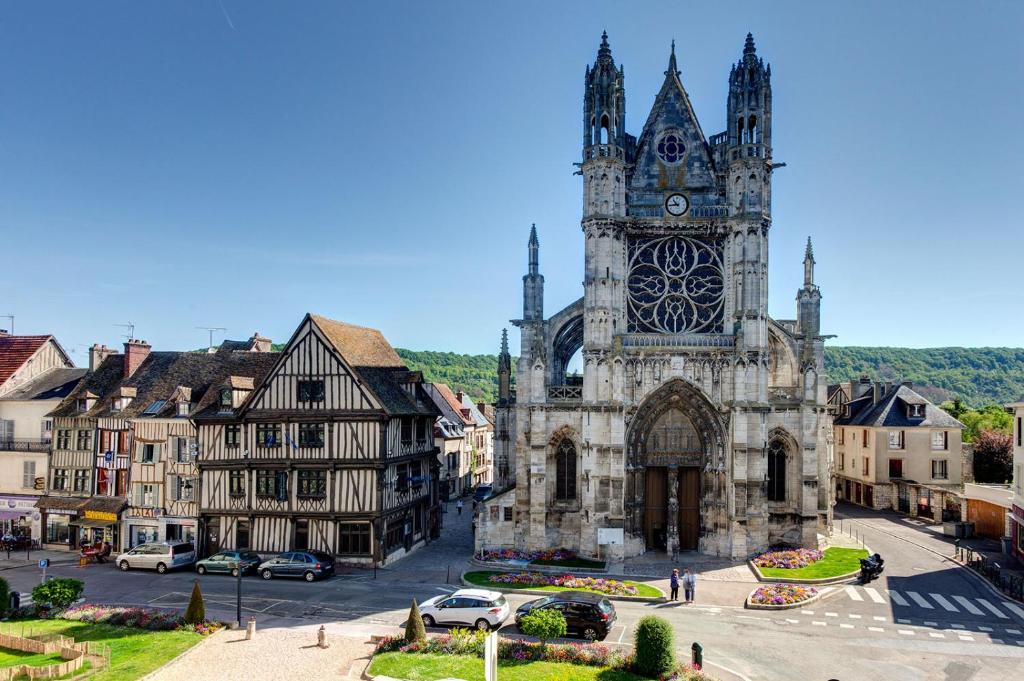
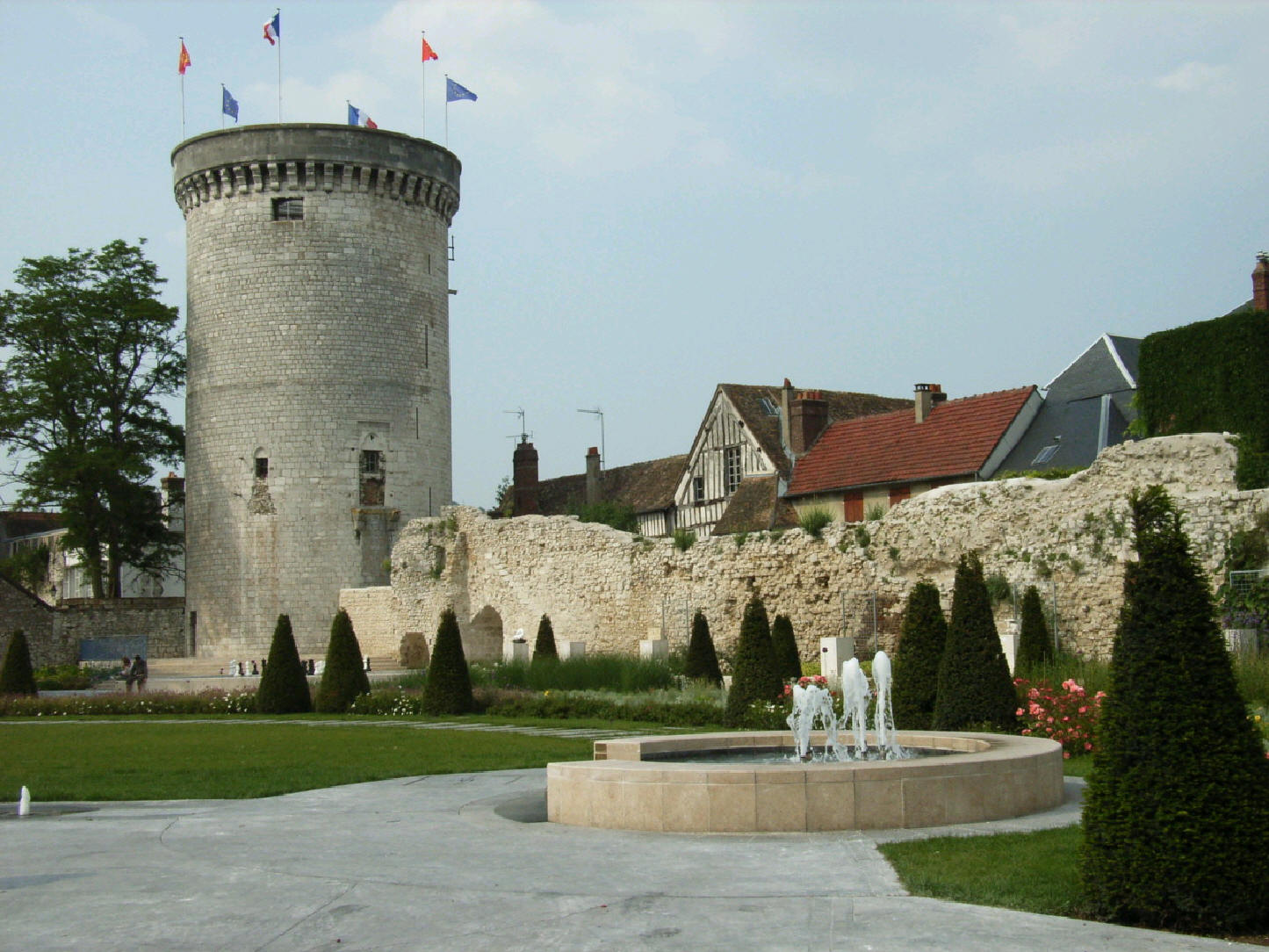

维罗纳(意大利语:Verona)是位于意大利北部威尼托大区阿迪杰河畔的一座历史悠久的城市,2000年入选联合国教科文组织的世界遗产。
维罗纳最初由古代意大利的埃乌加内人建造,公元前550年被古高卢人占领,公元前约300年波河流域成为罗马人的领土,公元前89年维罗纳成为罗马帝国的殖民地,维罗纳城内现存的圆形露天剧场(竞技场)建造于此后的一个世纪。
维罗纳因为处在多条贸易道路的交界,成为欧洲一座重要的城市。东哥特人从489年开始统治意大利,维罗纳成为东哥德王国狄奥多里克大帝的住所。569年伦巴底人阿尔博因取而代之,维罗纳成为伦巴第的第二大城市。774年伦巴底人在维罗纳做出对法兰克王国查理大帝的最后一次抵抗失败,维罗纳成为意大利国王的住所。952年德意志国王奥托一世入侵意大利征服伦巴第,自称意大利国王,维罗纳归属于巴伐利亚公爵家族,976年起隶属于克恩顿。12世纪开始维罗纳才获得城市的自治权,1164年创建并加入伦巴第城市联盟,中世纪后期由斯卡拉家族统治。
1509年至1517年维罗纳由神圣罗马帝国的马克西米连一世统治。维罗纳在1797年被拿破仑占领,他结束了威尼斯共和国的统治,在与意大利一起击败第一次反法同盟后,与奥地利签署合约,将维罗纳划为奥地利城市。意大利在1866年的普奥战争中与普鲁士结盟并最终战胜奥地利,维罗纳回归意大利王国。
Verona war in vorchristlicher Zeit eine Gründung der Räter und Euganeer, wurde um 550 v. Chr. vom gallischen Stamm der Cenomanen erobert und war erst ab 89 v. Chr. römische Kolonie. Das gut erhaltene Amphitheater – die Arena – entstand erst mehr als ein Jahrhundert später.
es Kaisers Augustus wurde Verona eine große Stadt. Decius schlug hier 249 den Kaiser Philippus Arabs, Konstantin 312 den Pompejanus (Schlacht von Verona). 402 gelang Stilicho hier ein Sieg über Alarich (Schlacht bei Verona). Attila plünderte und verwüstete 452 die Stadt. Dann war sie neben Pavia und Ravenna Residenz des Ostgotenkönigs Theoderich, der hier 489 Odoaker besiegt hatte und in der Sage Dietrich von Bern heißt. Aus dieser Zeit stammt der alte Name der Stadt: „Dietrichsbern“ [2]. Weiterhin war in alter Zeit die Bezeichnung „Welsch-Bern“[3] gebräuchlich (zimbrisch: Bearn).Im 5. und 6. Jahrhundert war Verona nicht nur Residenz der Ostgoten, sondern auch für den Langobardenkönig Alboin, bis es an das fränkische Reich kam. Ab 952 gehörte Verona zur Markgrafschaft Verona und damit zum Herzogtum Bayern und bzw. (ab 976) zu Kärnten. Erst zu Beginn des 12. Jahrhunderts wurde Verona selbständig und besaß eigene Stadtrechte. 1184 fand das Konzil von Verona statt.
Im Kampf gegen Kaiser Friedrich I. stand Verona mit an der Spitze des Lombardischen Städtebundes. Darauf wurde es durch die Parteikämpfe der Adelsparteien, der Montecchi (Ghibellinen) und der San Bonifazios (Guelfen), erschüttert. Zu Anfang des 13. Jahrhunderts bemächtigten sich die Ezzelini, die Beschützer der Montecchi, der Stadt. Nach dem Tod Ezzelinos da Romano (1259) wählten die Veroneser 1260 Mastino I. della Scala zum Oberhaupt (Podestà), dessen Familie 127 Jahre lang herrschte und unter Cangrande I. della Scala ihre höchste Macht und Blüte erreichte.
1387 kam Verona unter Mailands, 1405 unter Venedigs Herrschaft. Nach dem Ende der Republik Venedig ging Verona im Frieden von Campo Formio 1797 an Österreich; der vorherige, antifranzösische Aufstand der Veroneser zu Ostern wurde blutig niedergeschlagen. Unter österreichischer Herrschaft war die Stadt Teil des oberitalienischen Festungsvierecks (it.: Quadrilatero), das 1815 zur Verteidigung der österreichischen Besitztümer in Italien in den Orten Peschiera, Mantova (Mantua), Legnago und Verona errichtet wurde. Der Ausbau wurde zwischen 1833 und 1866 von österreichischen Pionieren nach Plänen des Ingenieurgenerals Franz Scholl vorgenommen. 1866 kam Verona als Ergebnis des Deutschen Kriegs zum Königreich Italien.
Heute ist die Stadt durch die Nähe zum Gardasee und zu Venedig ein beliebtes Ausflugsziel für Touristen und wirtschaftliches Zentrum der Region Venetien. 2000 wurde die Altstadt von Verona in die Liste des UNESCO-Welterbes aufgenommen.
ヴェローナ(伊: Verona (![]() 音声ファイル))は、イタリア共和国ヴェネト州西部にある都市で、その周辺地域を含む人口約25万人の基礎自治体(コムーネ)。ヴェローナ県の県都である。
音声ファイル))は、イタリア共和国ヴェネト州西部にある都市で、その周辺地域を含む人口約25万人の基礎自治体(コムーネ)。ヴェローナ県の県都である。
街の中心部には古代ローマ時代の円形競技場跡があり、街の象徴となっているほか、中世の町並みがよく残っており、2000年には「ヴェローナ市街」としてユネスコの世界遺産(文化遺産)に登録された。シェイクスピアの戯曲『ヴェローナの二紳士』『ロミオとジュリエット』の舞台としても知られる[4][5]。
Verona (Italian pronunciation: [veˈroːna] (![]() listen); Venetian: Verona or Veròna) is a city on the Adige river in Veneto, Italy, with 258,108 inhabitants. It is one of the seven provincial capitals of the region. It is the second largest city municipality in the region and the third largest in northeast Italy. The metropolitan area of Verona covers an area of 1,426 km2 (550.58 sq mi) and has a population of 714,274 inhabitants.[1] It is one of the main tourist destinations in northern Italy, because of its artistic heritage and several annual fairs, shows, and operas, such as the lyrical season in the Arena, the ancient amphitheater built by the Romans.
listen); Venetian: Verona or Veròna) is a city on the Adige river in Veneto, Italy, with 258,108 inhabitants. It is one of the seven provincial capitals of the region. It is the second largest city municipality in the region and the third largest in northeast Italy. The metropolitan area of Verona covers an area of 1,426 km2 (550.58 sq mi) and has a population of 714,274 inhabitants.[1] It is one of the main tourist destinations in northern Italy, because of its artistic heritage and several annual fairs, shows, and operas, such as the lyrical season in the Arena, the ancient amphitheater built by the Romans.
Two of William Shakespeare's plays are set in Verona: Romeo and Juliet and The Two Gentlemen of Verona. It is unknown if Shakespeare ever visited Verona or Italy, but his plays have lured many visitors to Verona and surrounding cities. The city has been declared a World Heritage Site by UNESCO because of its urban structure and architecture.
Vérone (en italien Verona /ve'ro:na/) est une très ancienne ville italienne, dans la région de Vénétie (plaine du Pô), sur les rives de l'Adige, à proximité du lac de Garde.
Fondée au Ier siècle av. J.-C., la ville historique de Vérone a connu des périodes d'expansion aux XIIIe et XIVe siècles et sous la République de Venise. Un nombre remarquable de monuments de l'Antiquité, de l'époque médiévale et de la Renaissance y sont préservés.
À la suite de la tragédie Roméo et Juliette de William Shakespeare parue en 1597, dont l'action se situe dans cette ville, la cité devient la ville romantique la plus célèbre du monde, baptisée la « ville des amants de Vérone » (maison de Juliette à Vérone).
Verona (, AFI: /veˈrona/[4][5]) è un comune italiano di 258 313 abitanti, capoluogo dell'omonima provincia situata in Veneto. È la seconda città della regione per popolazione dopo il capoluogo, Venezia, e la dodicesima a livello nazionale.[6]
Nota per essere il luogo della tragedia di Romeo e Giulietta, Verona si è sviluppata progressivamente e ininterrottamente durante duemila anni, integrando elementi artistici di alta qualità dei diversi periodi che si sono succeduti, tra i quali si ricordano in particolare il governo della famiglia Della Scala tra i secoli XIII e XVI, e quello della Repubblica Veneta tra l'inizio del Quattrocento e la fine del Settecento; per la sua arte e architettura e per la sua struttura urbana, "eccellente esempio di città fortificata", Verona è stata dichiarata patrimonio dell'umanità dall'UNESCO.[7]
Verona es una ciudad situada en el noreste de Italia, capital de la provincia del mismo nombre, una de las siete provincias de la región del Véneto.
Es una de las ciudades más atractivas e interesantes de Italia, la duodécima en población del país con 257.943 habitantes. Cercana a los lugares de mayor interés turístico del norte de este país, es, también, un dinámico centro económico. Está rodeada de colinas y atrapada por un meandro del río Adigio, a unos 30 kilómetros al este del lago de Garda.
La ciudad posee un aeropuerto internacional, vía ferroviaria y carretera, que facilitan el acceso a ella. En Verona se puede encontrar un centro histórico atractivo y a pocos metros, el Castello Scaligero del siglo XIV, la casa de Julieta, la Arena, y un teatro romano del siglo I.
Verona constituye un nodo geográfico importante. Ha sido siempre punto nodal de todos los sistemas de transporte terrestre y acuático del noroeste de Italia. En tiempos de los romanos era punto de encuentro de cuatro vías consulares: la via Gallica, la via Augusta, el Vicum Veronensium y la via Postumia.
Веро́на (итал. Verona [veˈroːna] ![]() слушать, вен. Verona) — город на северо-востоке Италии, в области Венеция, административный центр одноимённой провинции. Население — 260 135 человек (2014). Расположен на реке Адидже.
слушать, вен. Verona) — город на северо-востоке Италии, в области Венеция, административный центр одноимённой провинции. Население — 260 135 человек (2014). Расположен на реке Адидже.
Верону ежегодно посещает более трех миллионов туристов со всего мира, привлеченных памятниками архитектуры и различными культурными событиями, такими как ежегодный летний оперный фестиваль, проходящий в римском амфитеатре Арена ди Верона.
Исторические памятники и экономическое значение города связаны с его географическим положением.
Покровителями города являются св. Зенон Веронский и св. Пётр Веронский, день города — 21 мая.
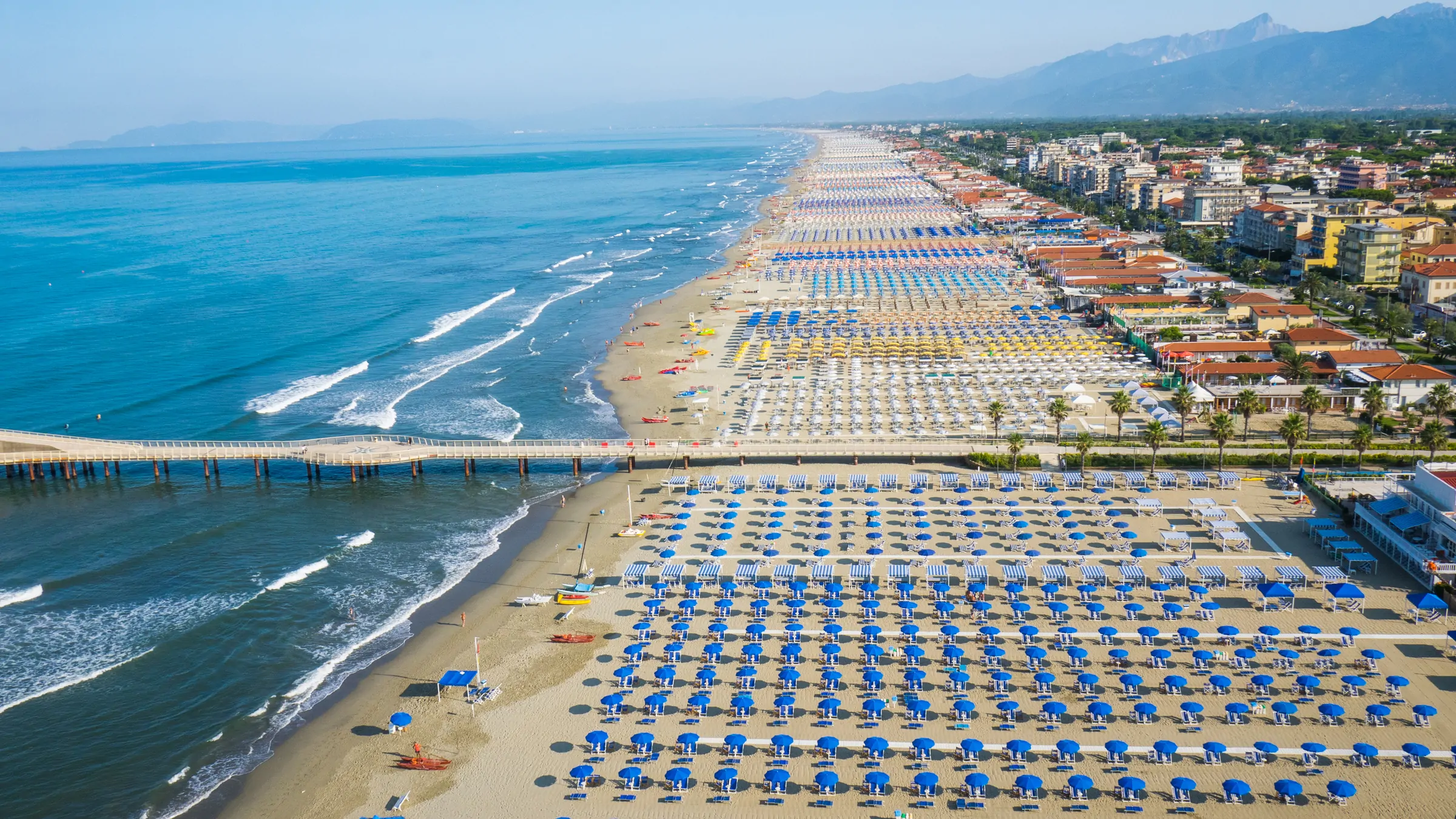
 History
History
 World Heritage
World Heritage

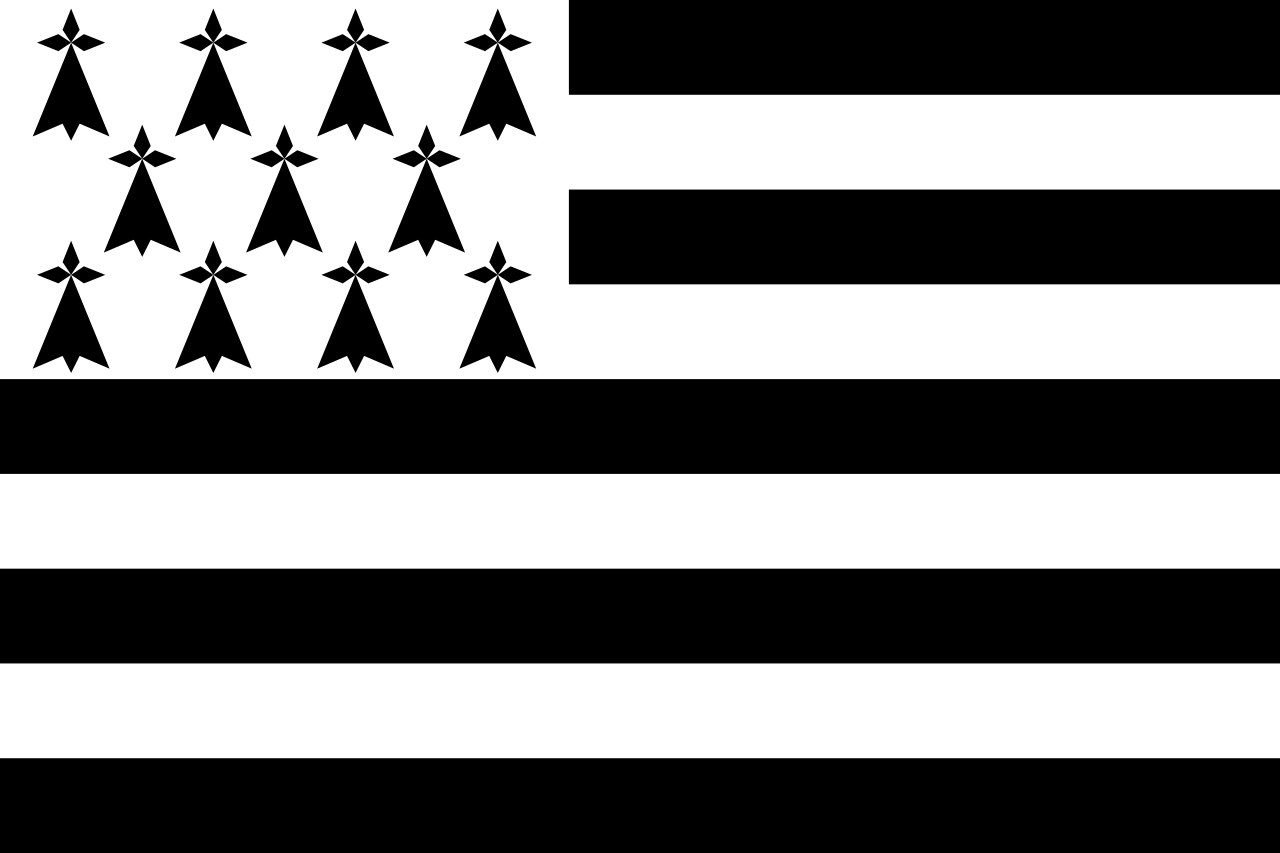 Bretagne
Bretagne
 Lombardia
Lombardia
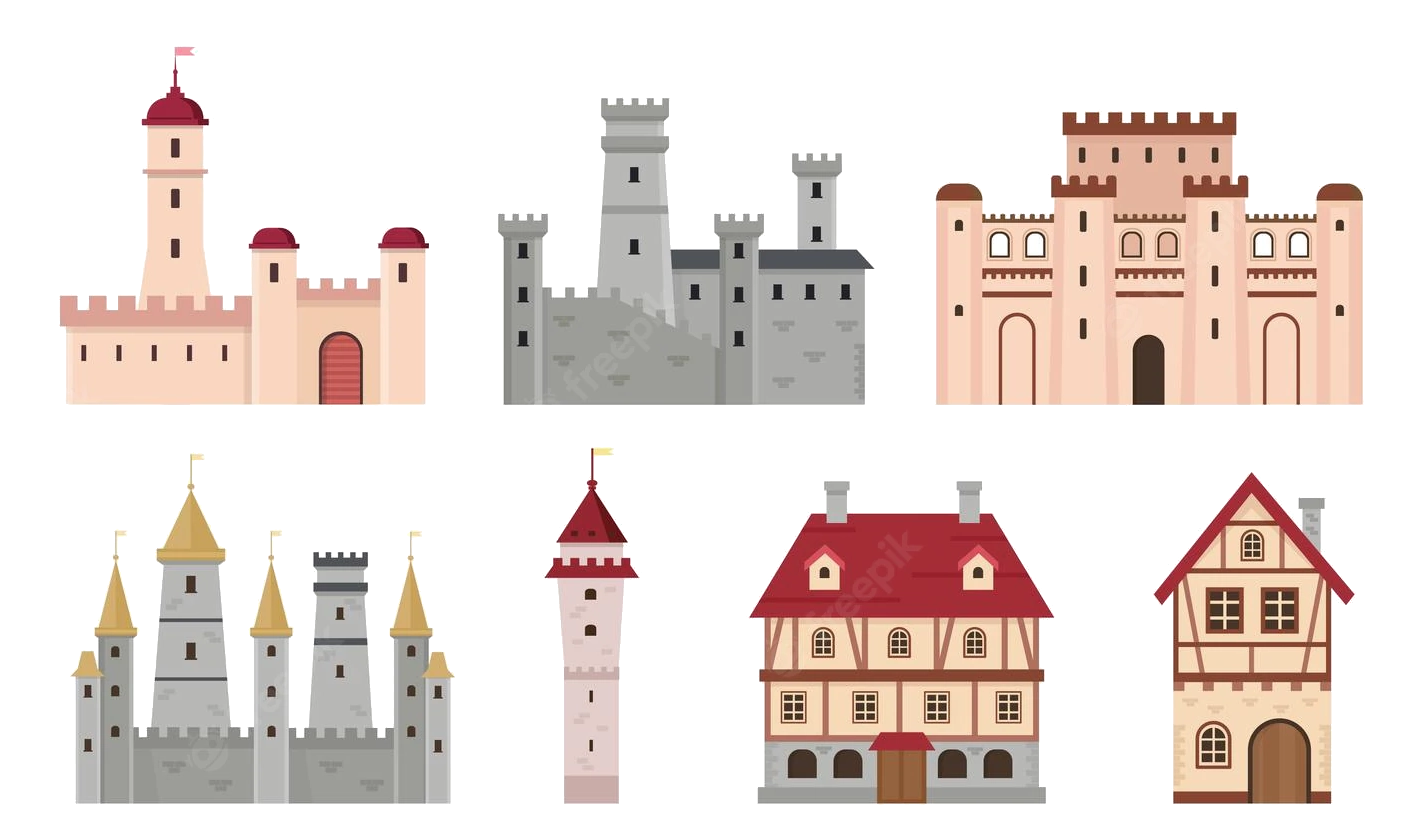 Medieval cities in Europe
Medieval cities in Europe
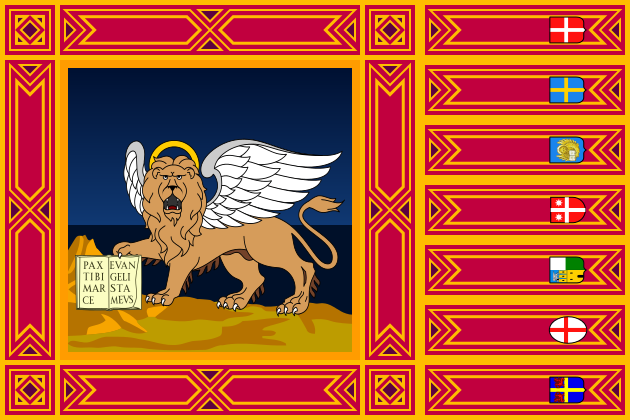 Veneto
Veneto
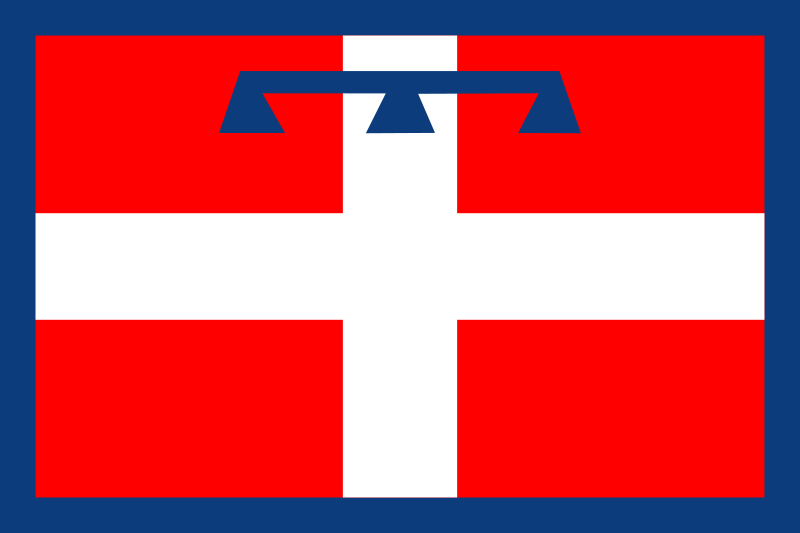 Piemonte
Piemonte
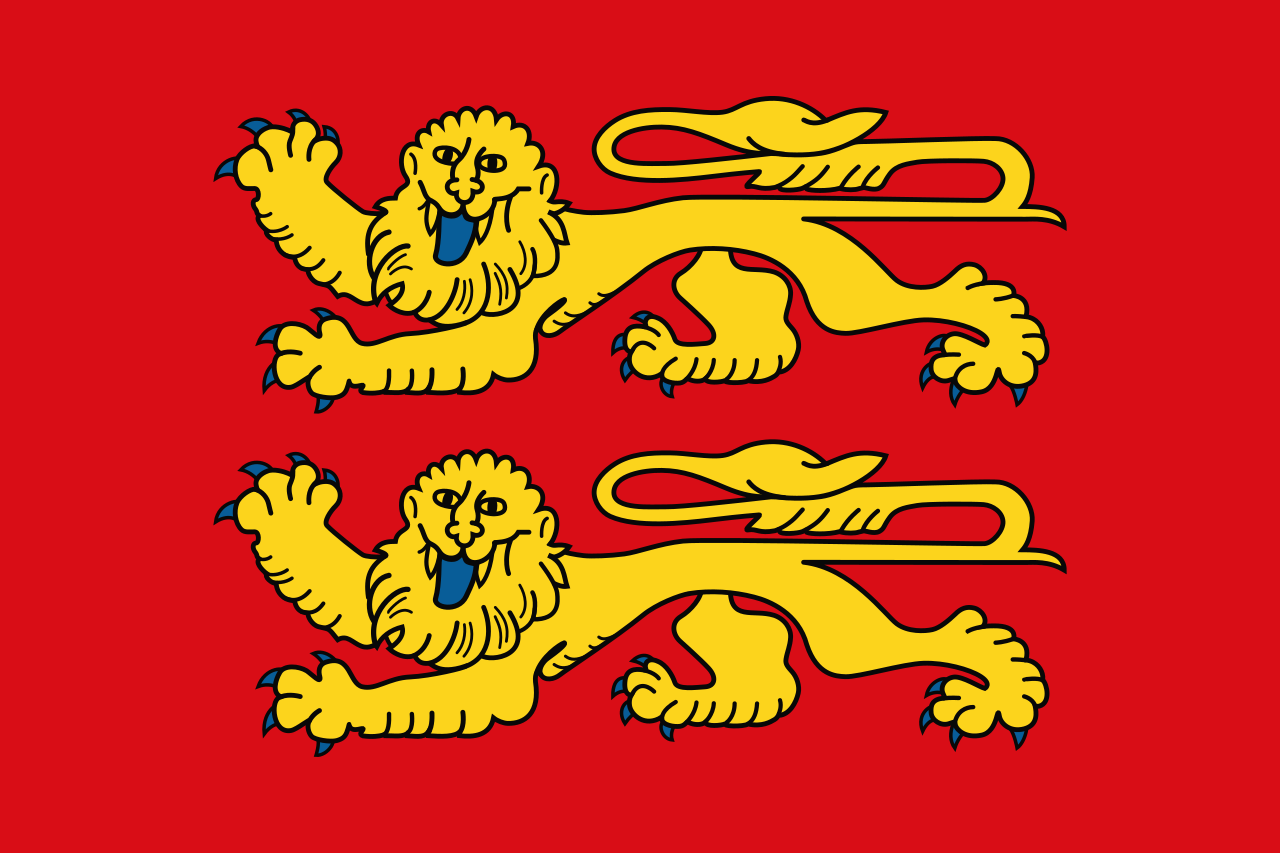 Normandie
Normandie
 Toscana
Toscana